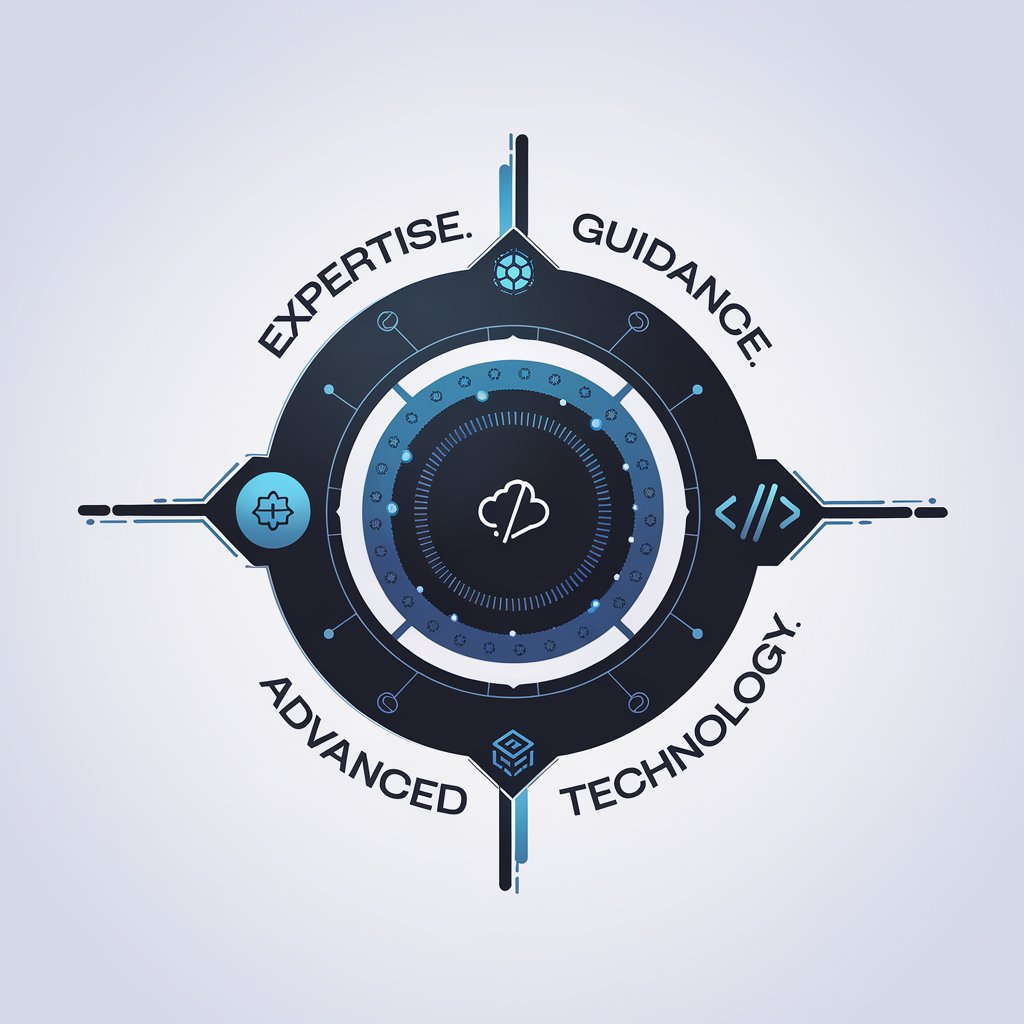
WixGPT-AI-powered content generation tool.
Generate content effortlessly with AI power.

Expert in Wix Editor and Corvid, aiding in website design and development.
How do I use Corvid to add a database?
Can you help me optimize my Wix site for mobile?
What are some best practices for SEO on Wix?
I'm having trouble with the drag-and-drop feature, can you assist?
Get Embed Code
WixGPT — Purpose and Core Design
WixGPT is a specialized assistant tailored for people building and maintaining websites on the Wix platform (Editor, Editor X, and Corvid/Velo). Its core design purpose is to bridge the gap between Wix’s visual, drag-and-drop authoring model and the programmatic power of Velo (formerly Corvid) by offering actionable guidance, code snippets, architecture recommendations, SEO & UX advice, and troubleshooting steps that are specific to Wix site structure, APIs, and features. WixGPT’s basic functions include: explaining Wix concepts in plain language, generating ready-to-paste Velo code (client and backend), designing database schemas and queries for Wix Data Collections, proposing responsive layout strategies for Editor/Editor X, advising on SEO/content strategy for Wix-specific settings (page SEO panel, structured data, page speed considerations), and diagnosing common site issues (permissions, dataset bindings, repeater logic, paywall/paid members flows). It also provides end-to-end examples and implementation patterns so users can adapt answers directly into their sites. Examples/Scenarios: 1) Small business owner: WixGPT generates a simple Wix Data collection schema for products,WixGPT overview and functions provides the dataset and repeater binding instructions, and returns the Velo code for search filters and add-to-cart functionality — enabling an owner to have a basic catalog and cart without needing to hire a developer. 2) Developer extending a Wix site: WixGPT supplies a backend web module for sending transactional emails via a third-party API, an example of secure secrets storage using Wix Secrets Manager, and how to call that backend from page code with wix-fetch and proper error handling. 3) Designer tasked with responsive behavior: WixGPT outlines how to implement grid/flex breakpoints in Editor X, maps content reflow for desktop/tablet/mobile, and provides CSS-like suggestions and best practices for fluid typography and image handling on Wix. WixGPT is optimized to be practical — giving explanations plus concrete, platform-compatible implementations that minimize copy/paste friction and align with Wix’s recommended patterns.
Primary Capabilities and How They’re Used
Wix Data & Database Design (Collections + Permissions)
Example
Design a 'Products' collection with fields (title, sku, price, description, images, stock, category, slug, createdBy). Provide collection permission rules (Read: Anyone; Create: Site Member; Update/Delete: Owner or Admin). Include sample indexes for fast queries on category and price ranges.
Scenario
E-commerce seller needs a product catalog searchable by category and price. WixGPT provides the collection schema, sample dataset wiring for a Product Listing page (dataset mode: Read), and the Velo code to implement a client-side filter that queries the collection with wixData.query(). It also shows how to enforce that only an authenticated site member can add reviews to a separate 'Reviews' collection with appropriate reference fields.
Velo (Corvid) Code Generation & Patterns
Example
Provide a ready-to-use backend module to send emails using a third-party transactional API, including how to store API keys in Secrets Manager, set up a "/sendOrderConfirmation" backend function, and call it from page code after order completion. Include error handling and example unit-testizable functions.
Scenario
A developer needs a secure server-side routine to send post-purchase emails and generate dynamic PDFs for invoices. WixGPT produces the wix-fetch based backend code, shows how to expose only the needed endpoint (exported backend function), and gives the client-side invocation pattern along with sample responses and retry logic.
UI/UX & Responsive Layout Guidance for Editor / Editor X
Example
Explain how to convert a desktop layout to responsive behavior in Editor X: grid track definitions, min/max width for columns, fluid image settings, and breakpoint-based adjustments. Provide an explicit step list and example wireframe-to-implementation mapping.
Scenario
A designer has a desktop mock of a services section (three columns with icons and text) and needs it to collapse into a single column on mobile and a two-column layout on tablet. WixGPT gives the exact steps to implement the grid in Editor X, the breakpoints to set, how to adjust spacing and typography per breakpoint, and how to test and debug cross-device issues within Wix’s preview tools.
Who Benefits Most from WixGPT
Small Business Owners / Solopreneurs
Owners who build and run their own Wix sites but lack coding expertise. They benefit from easy-to-follow instructions to implement features like product catalogs, booking forms, SEO basics, and simple automations. WixGPT helps them iterate quickly (e.g., add a membership-only page, set up an appointment system, or create a basic store) with minimal technical overhead and clear, copy/paste-ready snippets when needed.
Designers & No-code/Low-code Creators
Visual designers and no-code creators who use Wix Editor or Editor X and need help translating layout goals into practical Wix implementations. They get responsive layout strategies, accessibility recommendations, content structuring advice, and patterns for integrating dynamic content with repeaters, datasets, and lightboxes, enabling richer interactive designs without deep backend work.
Developers & Agencies (Wix Experts)
Professional developers and agencies building advanced Wix sites that require custom logic, integrations, and scalable data structures. They use WixGPT for Velo best practices, secure backend patterns, API integration templates (payments, CRM, email, analytics), performance tuning specific to Wix, and architectural guidance for multi-role sites (e.g., marketplaces, membership portals, complex booking flows). WixGPT speeds up implementation by providing vetted, platform-aligned code and patterns that reduce debugging and deployment time.
How to Use WixGPT
Try other advanced and practical GPTs
Kein KI Text (Menschlicher Schreiber) - deutsch
AI-powered German writing that sounds human

Direito Público
AI-driven public law insights and drafting

Professor AL
AI-powered assistance for writing and research.

Lucy
AI-powered research and writing, responsively human

MedGPT2+
MedGPT2+ — AI-powered clinical reasoning and biomedical education

Photo Math GPT
AI-powered math solver with step-by-step solutions.

ModCraft for Minecraf
Generate Minecraft mods with AI power

文案改写
Rewriting Made Easy with AI Power.

PIXTA画像生成ツール
Generate custom images with AI power.

Youtube Seo Description
AI-powered SEO descriptions for YouTube.

截图转公式(image to formula)
AI-powered Formula Extraction from Images.

ビジネスメール添削ツール
AI-powered email refinement for professionals

- Content Creation
- SEO Optimization
- Customer Support
- Marketing Copy
- Blog Writing
Frequently Asked Questions About WixGPT
What kind of tasks can WixGPT perform?
WixGPT can generate text for a wide range of purposes, including marketing copy, blog posts, product descriptions, academic content, and customer support responses. It uses advanced language processing to adapt to various contexts and requirements.
Do I need a subscription to use WixGPT?
No subscription is required to use WixGPT. You can start with a free trial at aichatonline.org. For full access or additional features, you may be offered premium plans after testing the free version.
How accurate are the results from WixGPT?
WixGPT’s accuracy depends on the clarity of your input and the complexity of the task. For straightforward requests, it generates highly relevant responses, but more nuanced or technical tasks may require manual review or fine-tuning.
Can I use WixGPT for SEO purposes?
Yes, WixGPT can assist with SEO tasks by generating keyword-optimized content, product descriptions, blog posts, or other text that can boost your website’s search engine ranking. It can create SEO-friendly copy that aligns with best practices.
Is WixGPT suitable for non-technical users?
Absolutely. WixGPT is designed to be user-friendly, making it accessible for both technical and non-technical users. Its intuitive interface allows anyone to input text and receive high-quality, relevant responses without technical expertise.





